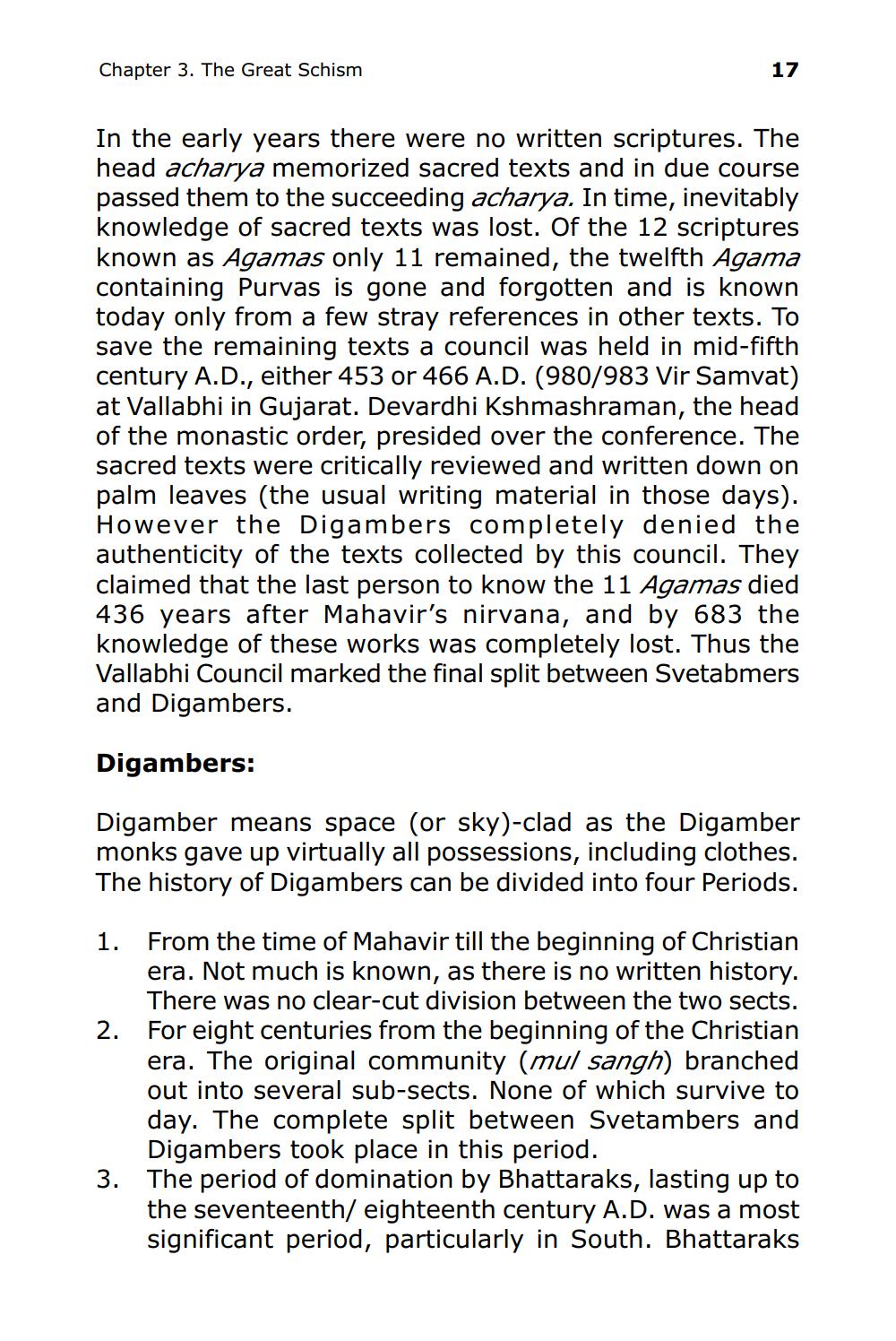________________
Chapter 3. The Great Schism
17
In the early years there were no written scriptures. The head acharya memorized sacred texts and in due course passed them to the succeeding acharya, In time, inevitably knowledge of sacred texts was lost. Of the 12 scriptures known as Agamas only 11 remained, the twelfth Agama containing Purvas is gone and forgotten and is known today only from a few stray references in other texts. To save the remaining texts a council was held in mid-fifth century A.D., either 453 or 466 A.D. (980/983 Vir Samvat) at Vallabhi in Gujarat. Devardhi Kshmashraman, the head of the monastic order, presided over the conference. The sacred texts were critically reviewed and written down on palm leaves (the usual writing material in those days). However the Digambers completely denied the authenticity of the texts collected by this council. They claimed that the last person to know the 11 Agamas died 436 years after Mahavir's nirvana, and by 683 the knowledge of these works was completely lost. Thus the Vallabhi Council marked the final split between Svetabmers and Digambers.
Digambers:
Digamber means space (or sky)-clad as the Digamber monks gave up virtually all possessions, including clothes. The history of Digambers can be divided into four Periods.
1. From the time of Mahavir till the beginning of Christian
era. Not much is known, as there is no written history.
There was no clear-cut division between the two sects. 2. For eight centuries from the beginning of the Christian
era. The original community (mul sangh) branched out into several sub-sects. None of which survive to day. The complete split between Svetambers and
Digambers took place in this period. 3. The period of domination by Bhattaraks, lasting up to
the seventeenth/ eighteenth century A.D. was a most significant period, particularly in South. Bhattaraks




